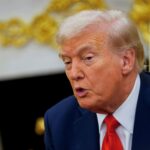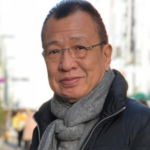Indian Prime Minister Narendra Modi arrived in China on Sunday, navigating the fallout from sweeping new US tariffs that have rattled his country’s key export sectors. Just days earlier, President Donald Trump imposed 50% tariffs on Indian goods like prawns and diamonds—punishment, he claimed, for India’s continued imports of Russian oil.
With India’s export-driven industries under pressure and China also reeling from US trade penalties, both Modi and Chinese President Xi Jinping appear motivated to re-examine their strained bilateral relationship. It’s their first one-on-one engagement since 2017.
Shared Economic Pressures, Mutual Opportunity
India and China, the world’s fifth- and second-largest economies respectively, are facing simultaneous economic headwinds. While China’s economy grapples with sluggish growth and waning Western demand, India’s ambitions to accelerate its growth and hit aggressive export targets are now in question.
“Traditionally, the world’s focus has been on the US-China relationship, but it’s time we also pay attention to how China and India—soon to be the second- and third-largest economies—can work together,” said Qian Liu, CEO of Beijing-based Wusawa Advisory.
China’s desire to diversify markets beyond the US, and India’s need for alternatives amid an unpredictable Washington, may be creating an opening for deeper engagement.
Long Shadows of Distrust
Despite the economic logic, significant hurdles remain. The two countries continue to spar over unresolved border disputes, most notably the deadly 2020 Galwan Valley clash in Ladakh, the worst military confrontation between the two in over 40 years.
The aftermath included bans on over 200 Chinese apps, suspension of Chinese investments in India, and halted direct flights—some of which may now be reversed. Officials have already confirmed that flights will resume and visa restrictions may ease.
Still, the relationship is far from warm.
“This is an uncomfortable alliance,” said Priyanka Kishore, principal economist at Asia Decoded. “But the US-India relationship is increasingly confusing for Delhi. Modi’s pivot toward China fits into a broader multipolar strategy both nations favor.”
SCO and Global Optics
Modi’s visit is tied to the Shanghai Cooperation Organisation (SCO), a regional bloc meant to offer a counterweight to Western-led institutions. SCO members include China, India, Russia, Iran, and Pakistan.
India has historically downplayed SCO’s importance, citing a lack of concrete results. Yet the latest US tariffs may be pushing Delhi to reassess its regional alliances. Moscow, for instance, has expressed hope for trilateral talks with China and India, signaling broader interest in cooperation.
Trump’s renewed threats to impose even more tariffs on BRICS nations (Brazil, Russia, India, China, South Africa) have only reinforced this shift.
“Beijing values the optics of Global South unity right now,” said Chatham House analysts Chietigj Bajpaee and Yu Jie. “And India’s participation is a key piece of that puzzle.”
Economic Realities and Possibilities
India still relies heavily on Chinese raw materials and components, especially in electronics and pharmaceuticals. Experts believe India may be seeking reduced import duties and smoother trade flows.
“India hasn’t yet capitalized on the global supply chain shift away from China—unlike Vietnam,” Kishore said. “But there’s a real opportunity for India to manufacture more electronics. It wouldn’t necessarily conflict with Chinese interests.”
Chinese companies, meanwhile, are eager to regain access to India’s massive 1.45 billion-person consumer base—particularly after bans on apps like TikTok and Shein. Eased visa approvals and investment channels would offer a lifeline as China faces a shrinking US market and saturated ASEAN trade.
Still, geopolitical sensitivities—over Tibet, the Dalai Lama, and China’s hydroelectric projects on shared rivers—add complexity. India’s tense ties with neighbors like Pakistan, where China is heavily invested, also complicate matters.
A Message to Washington
Experts warn that one meeting will not repair years of suspicion or resolve strategic conflicts. But Modi’s visit signals a willingness to explore a reset—and sends a clear message to the US: India has other options.
“Modi’s trip is not just about diplomacy—it’s strategic signalling,” said Antoine Levesques of the International Institute for Strategic Studies. “India is reminding the world, especially Washington, that it won’t be a pawn in someone else’s game.”











More Stories
Trump Announces Drug Pricing Deals to Cut Cost of Weight-Loss Medications
Poor Engineering Led to Titan Submersible Implosion, Say US Authorities
Nvidia Boss Predicts UK Will Become an “AI Superpower” as Tech Giants Pledge Billions